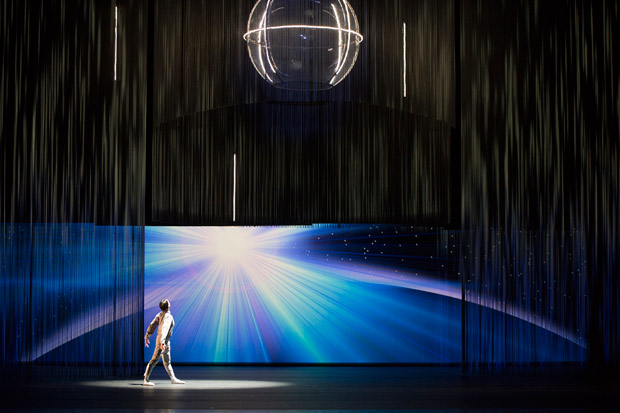
© Theo Kossenas Media 4 Artists. (Click image for larger version)
The Washington Ballet
Tudor, Ashton, World Premiere: Lilac Garden (Jardin aux Lilas), The Dream, Frontier
★★★✰✰
May 26, 2017
Washington, Kennedy Center Opera House
www.washingtonballet.org
www.kennedy-center.org
For years, Julie Kent graced the stage of the Kennedy Center Opera House as a star of American Ballet Theatre, putting her indelible stamp on every role she danced during ABT’s annual visits to Washington, D.C. She had a nearly 30-year illustrious career at ABT until her retirement from dancing in 2015.
Yet last month she was back on the Opera House stage – this time in a totally new capacity. Dressed in a chic black pants suit, with a microphone in hand, she warmly greeted the audience, thanked the donors, and announced the final program of the Washington Ballet’s 40th anniversary season, which was also her inaugural season as the company’s artistic director.
In her welcoming remarks, Kent spoke with excitement and pride about the program that featured two masterpieces, “two ballets that are near and dear to my heart:” Antony Tudor’s Jardin aux Lilas (1936) and Frederick Ashton’s The Dream (1964). Both pieces are Washington Ballet’s premieres – new territory for the company which is still mostly defined by a repertory dominated by short contemporary works, with an emphasis on dancers’ athleticism rather than nuance and emotion. The program also offered the world premiere of Ethan Stiefel’s Frontier, Kent’s first commission as the company’s artistic leader.
Watching the Washington Ballet on the spacious stage of the Opera House, performing with live music (Kent made good on her promise to return the Washington Ballet Orchestra to the pit), was a treat in its own right. The dancers looked relaxed and assured and their dancing – polished, nuanced, and confident – had acquired a bright luster, a new dramatic dimension. In short, under Kent’s sensitive guidance, the company looked transformed. Who knew that these dancers were capable of such intense theatrical expression as they did in Jardin aux Lilas and such marvelous comic panache as they demonstrated in The Dream?
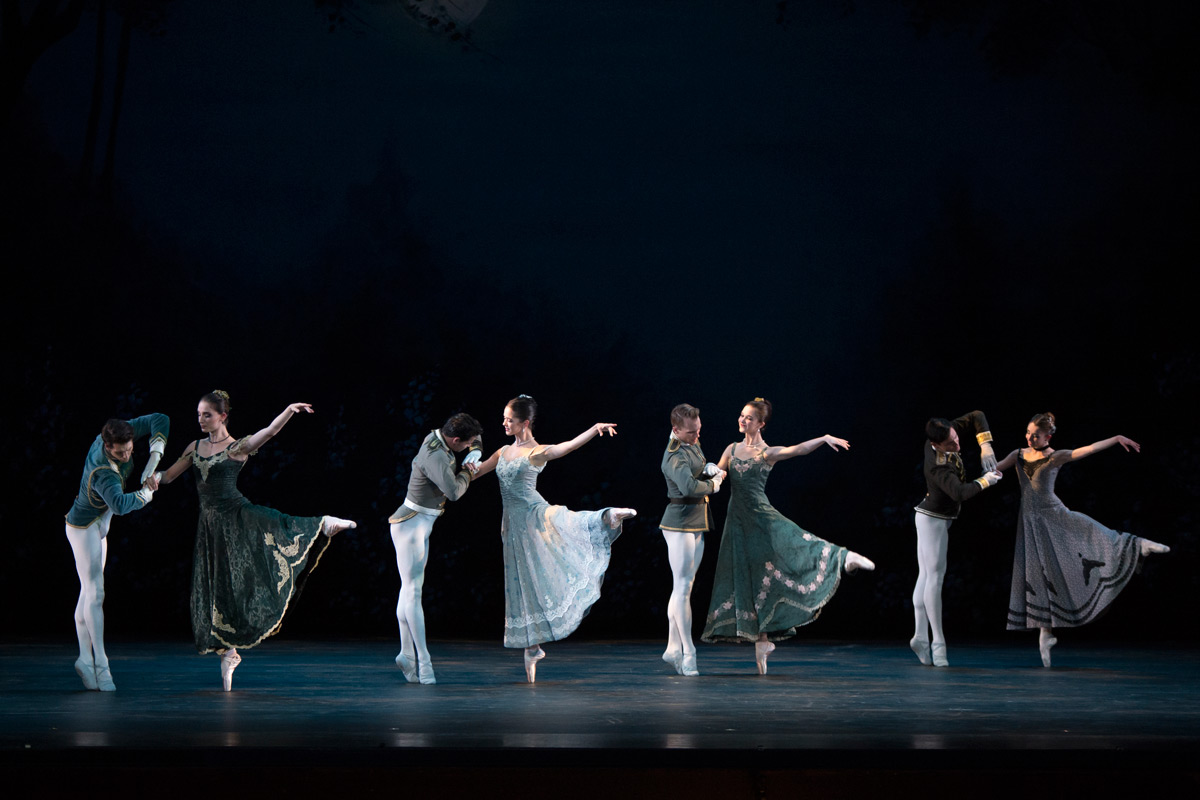
© Theo Kossenas Media 4 Artists. (Click image for larger version)
Tudor’s Jardin aux Lilas (sometimes called Lilac Garden) is a stirring psychological dance-drama, where the movement language, while simple in its use of steps and gestures, conveys an extraordinary range of emotional and dramatic sensibilities. The ballet revolves around a quartet of romantically-entangled personages: Caroline, a young aristocratic but impoverished woman; her groom, called here The Man She Must Marry; Her Lover, a young cadet; and a mistress of Caroline’s husband-to-be, or rather his former mistress, for she is known here as An Episode in His Past. It’s a story of love and heartbreak, dreams and nightmares, secrets and lies. Set to the piercing melancholy of Ernest Chausson’s Poème, Tudor’s choreography vividly captures the myriad of conflicting feelings of the main characters, their passion and despair, anticipation and frustration, enchantment and disillusion, all revealed through flickering gestures, quick glances, and subtle movements.
The petite and sensual Venus Villa danced the role of Caroline with an agonizing sense of inevitability and devastating emotional surrender when her heroine was bidding farewell to the man she truly loved; in the scenes with her future husband, she looked as if she was in a kind of trance – slow, unresponsive, and lifeless. The dashing Corey Landolt filled the role of Caroline’s lover with feelings of acute desperation and helplessness, while Tamás Krizsa was appropriately arrogant, stiff, and aloof in the role of The Man She Must Marry. The feisty Francesca Dugarte, balancing anger and heartbreak, was dramatically compelling as his jilted mistress, a poor soul entangled into the poisonous web of tragic love.
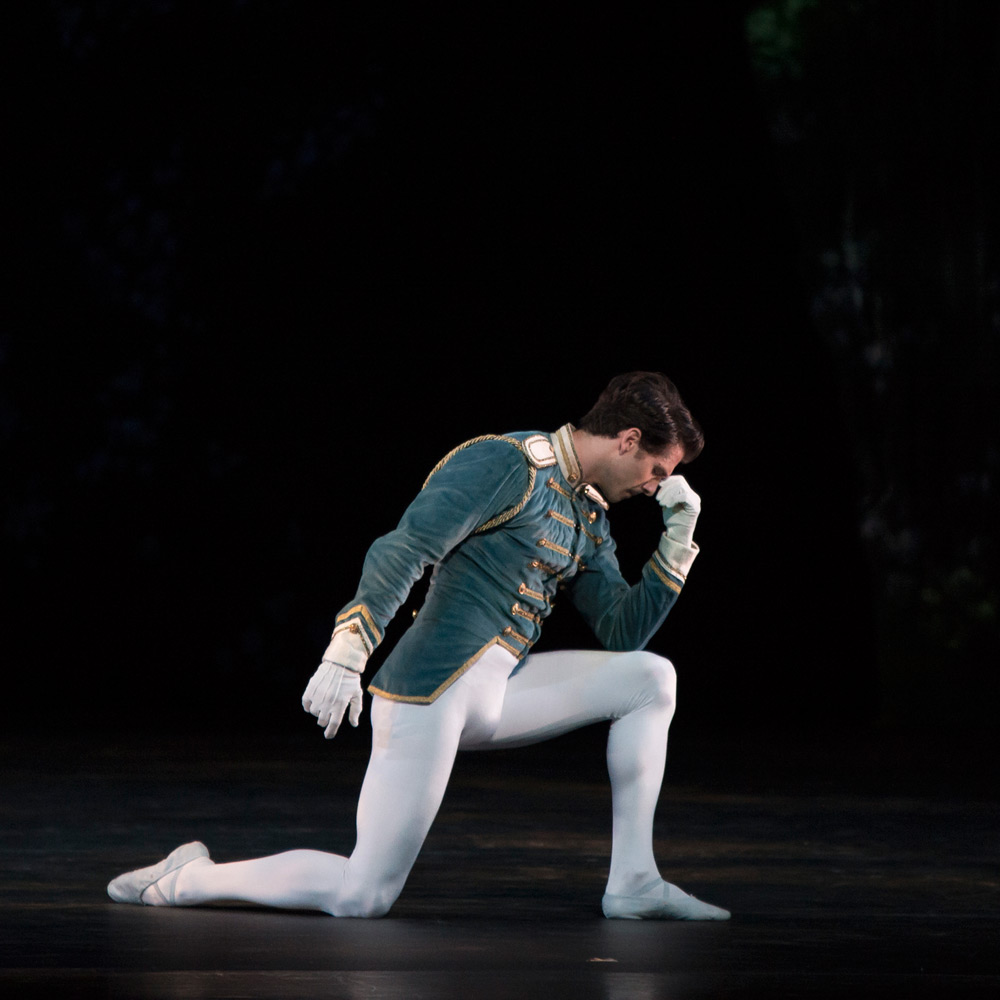
© Theo Kossenas Media 4 Artists. (Click image for larger version)
In Ashton’s Dream, a one-act balletic adaptation of Shakespeare’s “A Midsummer Night’s Dream” set to music by Felix Mendelssohn, there was a different quartet of emotionally-intertwined (mortal) lovers, in addition to a couple of arguing royal fairies, yet here, their romantic disentanglement unfolds as a delightful comedy, full of wicked wit and boisterous mischief.
The Washington Ballet looked completely at home in this highly-theatrical and technically challenging piece, beautifully staged by Anthony Dowell (on whom Ashton made the role of Oberon) and Susan Jones. At every moment, the ballet felt absorbing, immediate, and alive.
The towering Gian Carlo Perez was a stately and charismatic Oberon, the King of Fairyland, who decided (quite heartlessly) to teach his Queen, Titania (the enchanting EunWon Lee), a lesson for her stubbornness and unwillingness to give up her changeling boy, thus setting in motion a series of hilarious break-ups and reconciliations. The spritely Andile Ndlovu was light, quick, and downright naughty as Puck. As for the quartet of romantically-misaligned mortals, all dancers played and danced their roles with marvelous comic timing and flair. Nicole Graniero as Helena was especially effective. She looked deeply inconsolable while pining for the clueless Demetrius (Corey Landolt); she was hilariously fierce while fending off the advances of the delusional Lysander (Tamás Krizsa), who fell under the spell of the magic flower, courtesy of the elfin Puck; and she was a sight of pure comic gold, fighting with the disgruntled Hermia (the excellent Sona Kharatian), who realized that her lover, out of the blue, was vying for another woman.
The ensemble of assorted fairies was in good form – spontaneous, well-rehearsed, and vibrant – flooding the stage with dynamic waves of their dancing. The Washington Ballet orchestra, under the deft guidance of Martin West, gave a colorful, full-bodied treatment of Mendelssohn’s score.
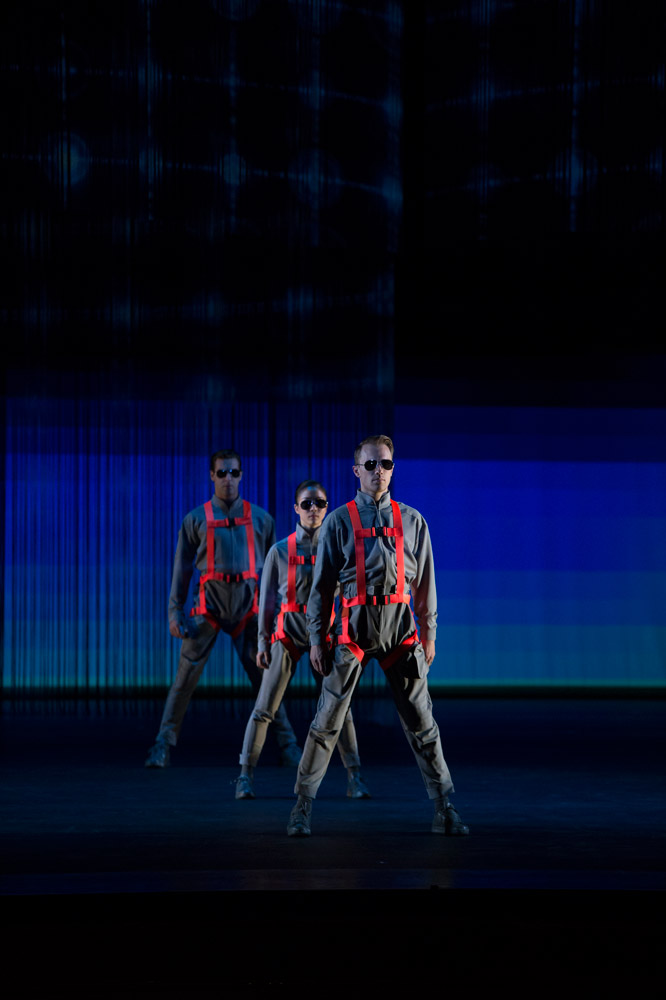
© Theo Kossenas Media 4 Artists. (Click image for larger version)
Ethan Stiefel’s Frontier, his first significant commission, had all the right ingredients –spectacular scenery and video designs by Dmitrij Simkin, imaginative costumes by Ted Southern and Flora Gill, and a serviceable commissioned score by Adam Crystal. There was also a team of talented and enthusiastic Washington Ballet dancers. Yet the ballet, with its space travel theme, didn’t leave much of an impression. Although the stage decorations looked stunning, the choreography – and the story (if any) – never took flight. In the first scenes, the dancers, dressed in flight uniforms, complete with dark sunglasses, looked like a group of extras from “Top Gun,” and their dancing routine resembled a light aerobic workout. Then there was a female astronaut (Sona Kharatian), first shown in the intimate setting of her home, cuddling with her husband (Corey Landolt), then in a glass space ship, flying to a distant planet and then returning back home to the welcoming embrace of her spouse. Despite the high-tech gloss, it all looked rather sentimental and underwhelming.

© Theo Kossenas Media 4 Artists. (Click image for larger version)
Still, the impressive success of Jardin aux Lilas and The Dream demonstrated that Kent and her team are moving in the right direction to elevate the Washington Ballet to artistic prominence. The company’s 2017/18 season includes such masterworks as George Balanchine’s Serenade and Prodigal Son; Michel Fokine’s Les Sylphides; Frederick Ashton’s Symphonic Variations; and Jerome Robbins’s The Concert; as well as John Cranko’s Romeo and Juliet. In all, for Washington ballet audiences, there is plenty to look forward to.












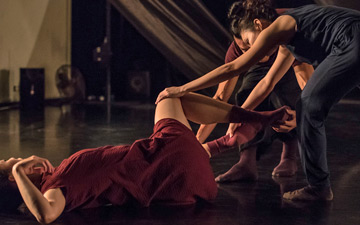
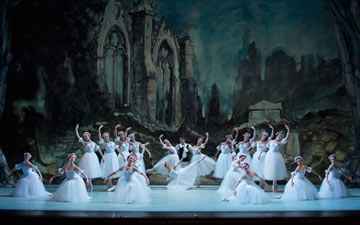

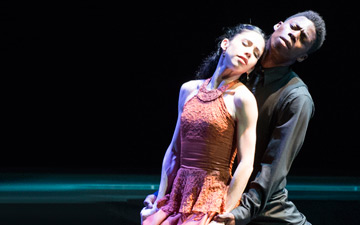

You must be logged in to post a comment.